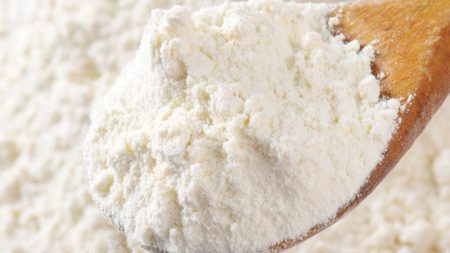
The diet that we eat today is significantly different from the diet our ancestors consumed. While it’s true that many of the foods we consume today contain many nutrients, the lack of fiber and other key micronutrients found in natural food sources has led to the rise of diseases such as heart disease, diabetes, and obesity.
One of the most important micronutrients to include in a healthy diet is fiber, which is essential to maintaining regularity and a healthy gastrointestinal tract. Fiber is one of the best ways to improve digestion and absorption of nutrients. It has also been shown to reduce the risk of certain cancers and help maintain healthy cholesterol levels.
What is a Balanced Diet?
A balanced diet is often described as providing a variety of foods, including whole grains, vegetables, fruits, nuts, legumes, dairy, and lean protein.
That is a long list to follow but keeping it at bay is possible via food consumption tables and some modern apps available on phones to stay updated on "What is Going In Inside of our Bodies!"
Healthy Variety of Food Intakes Explained in a Summary:-
Whole Grains: Whole grains are intact kernels of seeds from grasses and legumes. They include oats, barley, rye, wheat, corn, quinoa, millet, amaranth, sorghum, and buckwheat.
The term “whole grains” is commonly used to describe the health benefits of these foods. There are actually many types of whole grains, and their health benefits are vast. In fact, whole grains are associated with better digestive health, a decrease in chronic disease risk, improved metabolism, weight management, and even stronger bones.
Fruits and Vegetables: Vegetables are a great source of vitamins and minerals your body needs. They help keep you lean and energized. When you consume fruits and vegetables, you increase the number of calories you burn while simultaneously helping to lose weight.
Vegetables are healthy because they contain antioxidants and fiber that help fight diseases. According to the Harvard School of Public Health, fruits and vegetables may reduce the risk of stroke, heart disease, diabetes, obesity, certain cancers, and premature death.
Seasonal Fruits and Veggies are most apt for more than most people unless there is a medical precondition. The more popular ones are apples, bananas, carrots, tomatoes, green leafy vegetables, broccoli, and cauliflower.
Nuts and Legumes: Nuts and legumes offer protein and healthy fats, but most people are missing out on the nutrition that comes with them. The top three nut sources of protein are pistachios, almonds, and cashews. Other popular nuts include walnuts, pecans, peanuts, macadamia, and pine nuts. Legumes include beans, lentils, peas, chickpeas, and soybeans.
Dairy Products: Dairy products are considered to be essential food for the human body. As the second most popular food source after cereals, they are a fundamental contributor to human nutrition. They contain vitamins and minerals necessary for bone health and high levels of calcium and vitamin D, which help prevent osteoporosis. In fact, the National Dairy Council reports that adults need about 400 calories daily of low-fat milk, cheese, and yogurt, compared to a much smaller 300 calories for adults per day of fat-free milk and cheese and a somewhat lower 240 calories for low-fat yogurt.
How to Maintain a Balance in All the Food Varieties?
When was the last time you had a balanced diet? Or, even better, did you know how to balance your diet correctly? The truth is that most of us consume a high sugar/fat diet that is not ideal for health.
The body needs a balance of good carbohydrates, fats, proteins, and vitamins and minerals to function at peak performance. However, most diets today contain too much bad food and not enough good food.
What is the reason behind this? Well, there are a few reasons:
• Too Much Fast Food: When it comes to fast food, the calories aren't the problem. They're the good fat. A fast food meal is usually high in carbs but low in protein, which causes your blood sugar to spike and crash, increasing insulin.
• Bad Nutrition Education: Our nutrition education has failed. We've been told, "Eat Less and Move More" for years, yet our population is fatter and more sedentary than ever. What's more, this doesn't even seem to be working.
• Not Enough Good Carbs: Even the food pyramid, which is supposed to tell us how to eat, doesn't provide enough good carbs. Most of us consume an average of 75% of our daily caloric intake from carbohydrates, which is the least healthy option.
There are many ways to fix this problem. Here are some suggestions to get you started:
• Eat the Right Amount of Carbohydrates: Carbs are a key component of a balanced diet. We need at least three servings of carbohydrates per day. The best foods for this are fruit, grains, and dairy.
• Eat the Right Amount of Fats: Saturated fats are very unhealthy, and we should limit ourselves to no more than 10% of total calories consumed. The best sources of saturated fat are meat, poultry, butter, cheese, milk, and eggs.
• Eliminate Processed Foods: These are made using unhealthy ingredients and processes and are loaded with added sugar and other unhealthy additives. To avoid processed foods, read ingredient labels and avoid processed foods.
• Get Moving: If you want to improve your health, make sure you get at least 30 minutes of physical activity daily, 5 days a week.
How Konjac Gums Work To Support Our Digestive System
Konjac gums, or Konjak, is a natural plant-based dietary fiber derived from the konjac plant. Konjac has long been used as food and medicine in Asia.
Konjac is a type of jelly made from the root of a plant called the devil’s tongue or water caltrop. The root is often used in Asian medicine to treat conditions such as arthritis, gout, and indigestion. In the West, it is commonly used as a food additive and dietary supplement.
Konjac comes from the konjac plant's tuber, native to China and Japan. It has a rich source of dietary fiber, vitamins, minerals, protein, and antioxidants.
It is commonly used in Asian cuisine for its softening properties. Konjac has been used to soften and enhance foods, particularly desserts. Some people use it to make jelly out of fruit, milk, or water.
Konjac is also used to improve the texture of soups and stews. It is normally used to make smoothies. There are many health benefits of using Konjac and other konjac products (such as its gum).
It supports healthy digestion by binding to digestive enzymes that cause them to stick to your digestive tract, allowing them to break down food properly.
Konjac is an excellent source of soluble and insoluble dietary fiber, which helps to maintain regular bowel movements and can help prevent constipation.
Why Should You Have More Konjac Gum, and is it Good for Health?
Konjac is known as one of the most useful food supplements for its great nutritional properties. Konjac gum contains vitamins and minerals, such as calcium, potassium, magnesium, phosphorus, and iron.
There are many benefits of taking konjac gum. For example, taking konjac gum can help you to lose weight, increase muscle mass, and maintain healthy bones and teeth.
It originated in China and has been consumed there for centuries. As early as the second century, Chinese people began to use the plant as a food source and medicine. It was used to treat gastrointestinal disorders. Today, konjac is used in traditional Chinese medicine.
It is dietary fiber. Fiber is an essential part of the diet. The recommended daily fiber intake is 25 to 38 grams for women and 38 to 50 grams for men. It lowers cholesterol and increases satiety.


-450x253.jpg)
 Whatsapp
Whatsapp